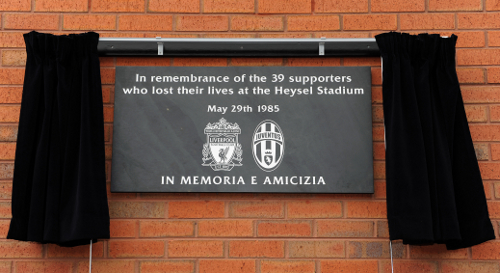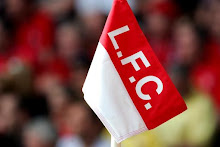“My idea was to build Liverpool into a bastion of invincibility.
Napoleon had that idea and he conquered the bloody world!
And that's what I wanted. For Liverpool to be untouchable.
My idea was to build Liverpool up and up and up until, eventually,
everyone would have to submit, and give in”
- Bill Shankly
The above quote may have very significance to some of you but to me, and generations of Scousers the world over, it means everything.
Had it not been for the influence of Bill Shankly, Liverpool Football Club would be nothing more than a team from the old Second Division who would remained remain there in its League One format with the occasional flirtation with the old First Division, or The Championship as it is now known.
Even to this day people still hold Shankly in high esteem, even those who never met him or saw the fruits or his labour during Liverpool’s glorious years. The Scot’s image can be seen at Anfield on match days on everything from flags and banners to t-shirts. Even in death, he continues to have a profound effect on the people of Liverpool.
My fascination with Shankly runs very deep, almost as deep as my infatuation with Liverpool FC itself. This Scotsman transformed Merseyside’s poor relations from second-tier mediocrity to the toast of both the country and the continent.
I have long been intrigued by Shankly’s persona and his burning passion for football. “The Greet Man” was how my dad, a Boys’ Pen graduate and a Shankly devotee from the sixties and seventies, described him when I was younger – in a poor, exaggerated attempt at Shanks’ gruff accent. Great indeed was the word. Those who do not understand the legacy of Shankly find it inconceivable that this middle-aged, balding Scotsman had such a profound impact on a city, that continues to linger over Merseyside to this day, through the medium of football.
Red-tinted glasses dictate that Shankly was a god amongst men. I beg to differ. In my opinion, there are two famous pictures that best sum up the kind of man Bill Shankly was.
The first is a typically football snapshot and shows Shanks doing what he loved best – training. The picture depicts Shankly, dressed in a red tracksuit with an old-fashioned case ball under one arm, standing on the pitch at Anfield during the early days of his tenure; his eyes narrowed as the sun shines down on his face with his free arm raised aloft and his index finger pointing to the sky. This image could very well be the Scouse alternative to the famous Stalin posters during the Soviet Union’s heyday – a nod to Shanks’ Socialist tendencies. The barrel roof of the Kemlyn Road stand in the background provides a traditional backdrop with the sign bearing the club’s name leaving nobody in any doubt about where this was taken. This, for me, shows Shankly the revolutionary; an innovator of the game who was way ahead of his time. He revolutionised training which, prior to his arrival in 1959, consisted of a four-mile run from Melwood to Anfield. There was no ball work whatsoever. Shanks changed all that. He made football the focal point of training sessions once again. Sweat boxes were introduced to improve players’ accuracy and reactions and the famous 5-a-side games were part and parcel of a normal day at Melwood.
Speaking about the transformation of the regime at Deysbrook Lane, Shanks once remarked: “Melwood means more to me than any other part of Liverpool. It was where Liverpool was made. The first time I saw the place, an overgrown, neglected place it was too, I said to Ness (his wife), 'I'm going to see Melwood reborn, cultivated.' I did. Every inch of it.”
Shankly was the type of man who believed that if a job was worth doing then it was worth doing properly and of your own accord. He prided himself on all his achievements at Anfield, whether it be on or off the pitch. Once famous Shankly anecdote that still is quoted today was how the famous old ground was so dilapidated that he had to help kick-start a mini-renovation. “I don't know if you ever saw Anfield when I first came but it was the biggest toilet in Liverpool,” he claimed. “We had to bring the water in from Oakfield Road and it cost £3000. There was no water to flush the toilets.” According to his family, Shankly was hopeless with basic DIY tasks but he oversaw the construction of the legendary Anfield dugout with the help of assistant manager Bob Paisley as well as tough-tackling defender and former brickie Tommy Smith.
Many biographers and former players will testify that this image shows Shankly in his comfort zone. He was more at home on the training pitches at Anfield than he ever was in the Anfield dugout. There is no denying that he enjoyed his time as manager but as anyone who has read The Real Bill Shankly – a moving an insightful portrait of his life by granddaughter Karen Gill – will testify, the former Preston North End player could never resist a good old-fashioned kickabout even if it was with the local school kids.
You only have to look at the Bill Shankly Playing Fields on Barnfield Drive in West Derby, one side of which faces the house Shankly lived in until his death in 1981, to see how much he loved the game. There are some great photographs in the book of Shanks playing on the fields in his old Liverpool drill top with fellow Sunday league enthusiasts.
The second shows Shankly side-on; both thumbs pressed against his chin and looking into the distance. A painting of this particular photograph proudly hangs on the wall in the old trophy room of the Main Stand at Anfield alongside portraits of the club’s other managerial greats including Bob Paisley, Joe Fagan and Kenny Dalglish. The frown lines on his forehead – a sign of true character – are the focal point in this pensive pose as they demonstrate a man of wisdom, deep in thought.
Shankly was a profound thinker and a champion of Socialism. He was born and raised in Glenbuck, a small mining town in Ayrshire, where the strong sense of community was embraced by the entire town. Today, the town has virtually disappeared. All that remains are a few houses dotted about the place. Everything else has gone; a sad indictment of a missing piece of Shankly’s legacy. Glenbuck made the Scot the man he was just like the great club he made Liverpool. The club’s supporters, however, have not forgotten this and in 1997 several groups joined together to raise funds for a lasting memorial to Shanks on the site where the old town used to stand.
Shankly’s strong belief in socialism has remained with the Anfield faithful, over a quarter a century on from his passing. Liverpool is considered to be very much a family club. Whilst most teams will claim that they are family-orientated, they will never be able to match the sense of community and solidarity that Liverpool supporters boast. This is not a view of the red-tinted variety. To this day they continue to epitomise the spirit of Bill Shankly. They epitomise it so greatly that the country’s first ever supporters’ union was founded under the guise of the Spirit of Shankly and is backed by the Shankly family for providing a voice for traditional supporters in a sport now driven by gross commercialisation and financial one-upmanship. That sense of community is not limited solely to those supporters who are registered with the Union. Those who are not still retain the same level of cohesion and will help out their fellow Kopite, within reason, for the good of the heritage and traditions of Liverpool Football Club; whether it be sorting someone out last-minute for a match ticket or helping raise funds for charity, no ask is too big. I have been just one of many beneficiaries of the community spirit that surrounds the club and I hope that I can start to repay the favour someday.
For a good number of years now I have considered myself to belong to two families; the one I was born into and the one into which I was accepted. The saying ‘you can choose your friends but you can't choose your family’ rings very true for me as I can’t choose who is in my family, whether it be my immediate one or Liverpool FC.
I wouldn’t say that Liverpool is one big happy family as there will be factions who don’t see eye-to-eye. Some of us fall out from time to time and patch things up. Others fall out and don’t kiss and make up. It’s just the same as any other family.
Shankly himself made the family comparison when paying tribute to the devoted supporters who packed into Anfield during his time in the managerial hot-seat. "The word 'fantastic' has been used many times, so I would have to invent another word to fully describe the Anfield spectators,” he said. “It is more than fanaticism, it's a religion. To the many thousands who come here to worship, Anfield isn't a football ground, i's a sort of shrine. These people are not simply fans, they're more like members of one extended family."
We might not get along but we are all part of one very big family who are all pulling in the same direction. This season alone has proved that. For all the in-fighting and disagreements, we have pulled together in the important times such as the push for the title and – more importantly – the 20th anniversary of Hillsborough when we told the Government what we wanted as well as the likes of Duckenfield, Mackenzie and the other perpetrators of the horrible myths that surround the deaths of our 96 brothers and sisters that we are not going to go quietly into the night.
As Trevor Hicks remarked at the memorial service on April 15 this year, “Twenty years on. Still together. Still determined. Still resolved as ever that the truth will defeat the lies and propaganda.”
Just like a proper family should be.



